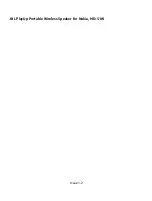
Configuring the RF signal
R&S
®
SMM100A
318
User Manual 1179.1341.02 ─ 05
Consider the following interdependency:
●
EFC in combination with an external PLL
If the EFC is applied in combination with an external PLL (phase locked loop), the
PLL bandwidth must be smaller than the bandwidth of the external tuning signal.
●
FM-DC mode
If the measurement requires higher PLL bandwidth, we recommend that you use
the external FM modulation (DC coupling) in low noise mode.
The FM-DC mode yields a fixed tuning sensitivity that is independent of the RF out-
put frequency and corresponds to the selected FM deviation.
Sharing the 1 GHz reference frequency to obtain phase-coherent signals
Compared to 10 MHz, a 1 GHz reference signal significantly improves the achievable
phase stability between two signal sources. Because the synchronization frequency
increases by a factor of 100, the relative phase fluctuations between the sources can
be reduced.
1 GHz at connector Ref In 1GHz and 1 GHz at Ref Out 1GHz
●
External f
Ref
= 1 GHz
●
= "External"
●
= "1 GHz"
●
= "1 GHz"
Using external reference source
If you have a clean external reference signal with 10 MHz or 100 MHz frequency, for
example, you can
directly pass it to the output
. The signal quality remains the same.
10
MHz, 100
MHz at connector Ref Out and Ref In
●
External f
Ref
= 10
MHz or 100
MHz
(
earlier RF hardware versions
: 5
MHz, 10
MHz, 13
MHz)
●
= "External"
●
= "10
MHz, 100
MHz" or "Input Signal (loop through)"
(
earlier RF hardware versions
: 5
MHz, 10
MHz, 13
MHz)
●
Set the synchronization bandwidth according to the requirements of the applica-
tion.
Figure 7-4: Synchronizing instruments with a 10 MHz external reference signal
Ref. Frequency Source = e.g., Rohde
&
Schwarz signal analyzer
f
Ref
= 10
MHz, 100
MHz, 1
MHz to 100
MHz external reference frequency
Ref In, Ref Out
= Connectors
Reference oscillator
















































